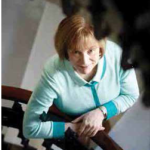In this series, Linda Bevilacqua, President of the Core Knowledge Foundation, will share an instructional materials developer’s perspective on the current materials landscape as well as provide an in-depth look at the Core Knowledge curricular materials. If you have questions you’d like Linda to address, please submit them to ccssmaterials@studentsachieve.net.
In this post, Linda answers questions about why the Core Knowledge curriculum was created and how it differs from other curriculum options.
Why did the Core Knowledge authors decide to create this curriculum? What gaps or weaknesses in the existing instructional materials marketplace is Core Knowledge designed to address?
E.D. Hirsch, the founder of the Core Knowledge Foundation, has been writing about the causal connections between background knowledge and reading comprehension for over 30 years. Hirsch is the author of Cultural Literacy, The Schools We Need and Why We Don’t Have Them, The Knowledge Deficit, The Making of Americans: Democracy and Our Schools, and Why Knowledge Matters, to be published by Harvard Education Press in late summer, 2016.
During most of that time, we at the Core Knowledge Foundation assumed that, as the connection between background knowledge and comprehension became more widely known, major textbook publishers would, of their own initiative, undertake development of new instructional materials based on these findings. When this didn’t happen, the Foundation decided in 2007 to seek philanthropic funding so that we could develop our own exemplary early literacy program.
We were determined to make instructional design decisions based on demonstrated psycholinguistic principles and the most up-to-date research on early literacy instruction. Our initial motivation was to develop ELA materials that incorporated Hirsch’s insights about building a broad foundation of background knowledge and vocabulary, beginning in the earliest years, using a coherent, sequenced, and cumulative approach to building knowledge within and across grade levels.
An early review of the literature revealed that students’ listening comprehension far outpaces reading comprehension until early middle school. So, we quickly recognized that we would need to leverage listening, rather than reading, as the means by which we would provide students in the earliest grades with rich academic content experience.
We were equally intent on ensuring that students encountered large doses of history and science, since the length of time devoted to ELA instruction in many classrooms — which at that time included mainly fiction text — had squeezed out the possibility of devoting any daily instructional time to these particular subjects.
How is Core Knowledge different than other curriculum options purchasers might be considering/currently using?
The early grades of CKLA use a two-strand instructional approach, with each strand intentionally independent of the other, to ensure that students learn essential foundational skills. Each day, the 60-minute Skills Strand includes lessons to build a coherent foundation of knowledge critical to understanding what is heard and/or read. Students also participate in sixty minutes of daily instruction in the Listening and Learning Strand, during which they listen to complex text, to systematically build vocabulary and content knowledge.
In the Skills Strand, specific sound-spellings are taught in each grade level. These sound-spellings are clearly identified in each unit, with sufficient time allotted for students to learn, practice, and continuously review the sound-spellings.
The Skills Strand K–2 Readers are 100% decodable, which in CKLA means that students do not encounter words in a story or chapter with spelling patterns that have not yet been explicitly taught and practiced first. This approach provides intensive practice with the sound-spellings under study, while also ensuring that students are highly successful in reading each text.
The readers are engaging and entertaining, written on a variety of topics and in the style of chapter books that inspire children to want to read more to find out what happens next.
In the Listening and Learning Strand, the topics that students learn about were not randomly chosen, but rather are based upon the coherent knowledge sequences derived from research by content experts, educators, cognitive scientists and others. Known as The Core Knowledge Sequence (K–8), it is available for free download. The sequence of topics within and between grade levels is designed to build cumulatively upon the knowledge that students are taught in CKLA.




















I will be a first year teacher in a combined-grade TK-2 classroom in the fall. I want to use Core Knowledge, but it’s clear that I will need to adapt it for my mixed-age group. How could I adapt this program for my classroom of 4 to 8 year-olds while maintaining fidelity as much as possible?